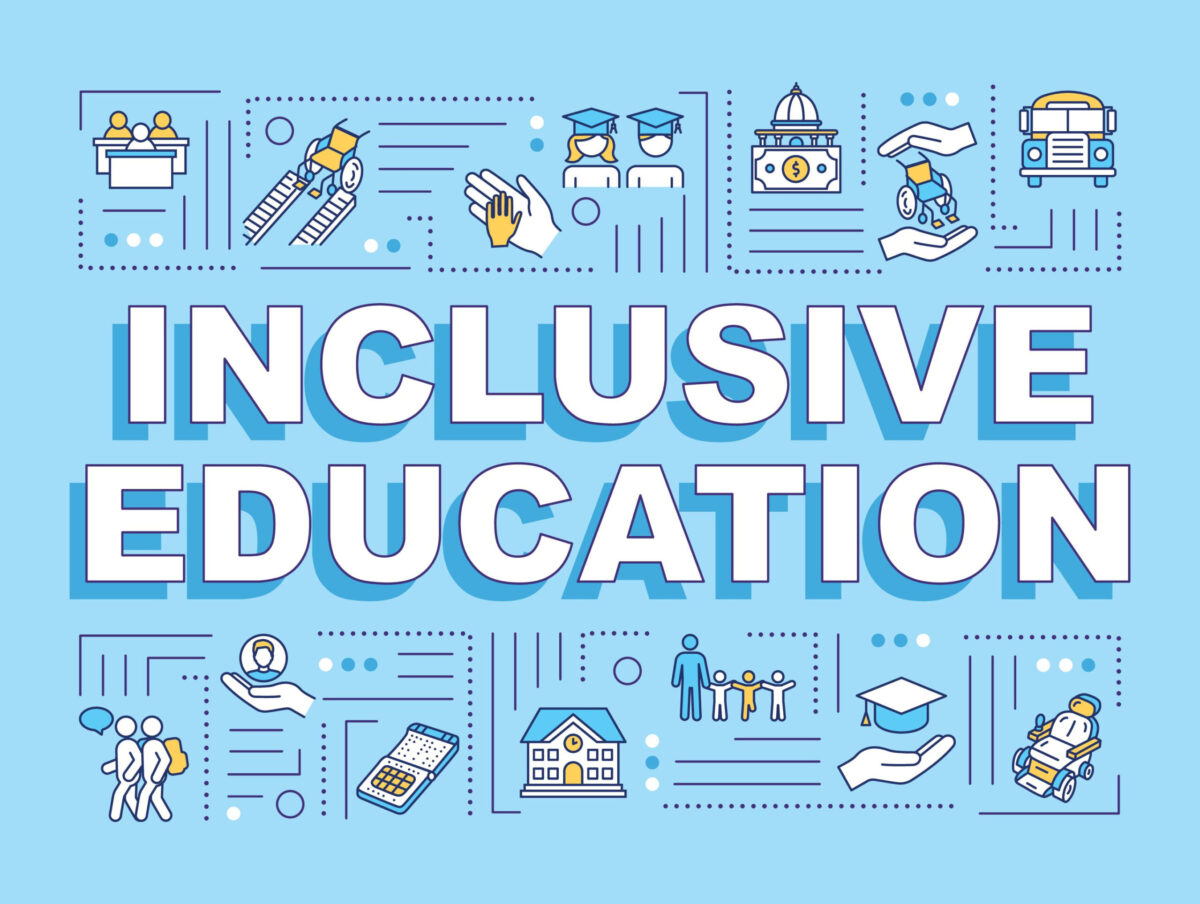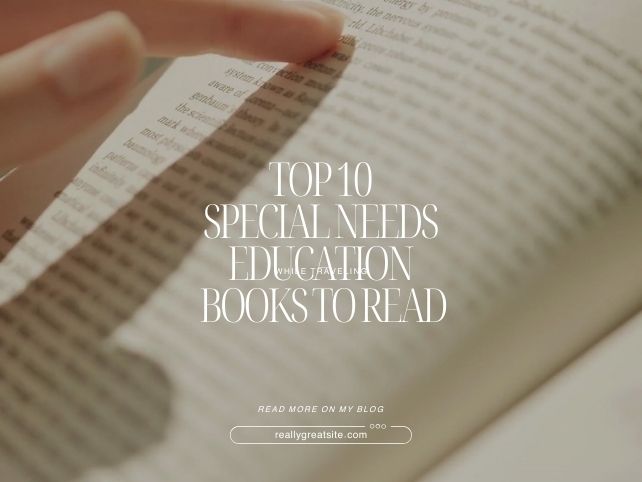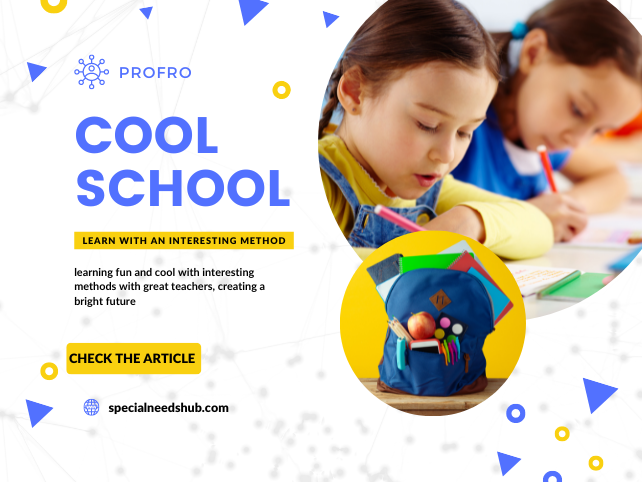
Inclusive education has gained significant recognition in recent years as a means of providing equitable learning opportunities for all students, including those with special needs. The mainstream classroom is a crucial setting for fostering an inclusive educational environment. However, to ensure the success and well-being of students with special needs, it is imperative to implement appropriate strategies and support systems. This article aims to explore various ways to support students with special needs in the mainstream classroom, promoting an inclusive and empowering educational experience for all.
Understanding Individual Needs:
The first step in supporting students with special needs is to gain a comprehensive understanding of their unique requirements. According to the National Center for Education Statistics (NCES), in the United States alone, approximately 7 million students receive special education services, highlighting the importance of individualized support.
Differentiated Instruction:
Implementing differentiated instruction is vital for meeting the diverse needs of students in the mainstream classroom. The World Health Organization (WHO) estimates that 15% of the global population lives with disabilities, emphasizing the necessity for tailored instructional approaches to ensure equal access to education.
Assistive Technologies:
Leveraging assistive technologies can significantly enhance the learning experience for students with special needs. According to a report by the Center for Digital Education, 94% of educators believe that technology has a positive impact on the education of students with special needs, emphasizing the transformative potential of assistive technologies. These technologies are designed to provide additional support, accommodations, and accessibility, enabling students to overcome barriers and actively participate in classroom activities. Here are some examples of assistive technologies commonly used in mainstream classrooms:
a. Text-to-Speech Software: Text-to-speech software converts written text into spoken words, allowing students with reading difficulties or visual impairments to access and comprehend written material. Popular text-to-speech tools include NaturalReader, Read&Write, and Kurzweil 3000.
b. Speech Recognition Software: Speech recognition software enables students to dictate their thoughts and ideas, which are then converted into written text. This technology supports students with writing difficulties or physical impairments that make typing challenging. Dragon NaturallySpeaking and Google Docs Voice Typing are widely used speech recognition tools.
c. Graphic Organizers and Mind Mapping Tools: Graphic organizers and mind mapping tools assist students in organizing their thoughts, visualizing connections, and planning their writing. Software programs like Inspiration, MindMeister, and Lucidchart offer digital platforms for creating visually structured diagrams and concept maps.
d. Digital Reading and Audiobook Platforms: Digital reading platforms, such as Bookshare and Learning Ally, provide a vast library of accessible books and textbooks in various formats, including audio, large print, and braille. These platforms cater to students with print disabilities, such as dyslexia or visual impairments.
e. Communication Apps and Devices: Augmentative and alternative communication (AAC) apps and devices support students with speech or language impairments. These tools enable individuals to communicate effectively using symbols, pictures, or text-to-speech capabilities. Widely used AAC apps include Proloquo2Go, TouchChat, and Avaz.
f. Adaptive Learning Software: Adaptive learning software utilizes personalized algorithms to deliver customized instruction and practice activities based on the individual needs of students. These programs adapt content, pacing, and difficulty levels to suit each student’s abilities. Examples of adaptive learning platforms include DreamBox, Khan Academy, and ALEKS.
g. Assistive Listening Systems: Assistive listening systems, such as FM systems and loop systems, improve sound clarity and reduce background noise for students with hearing impairments. These systems ensure that students can hear and understand instructions, discussions, and multimedia presentations clearly.
h. Physical and Motor Skill Assistive Devices: Various assistive devices support students with physical and motor skill challenges. These include adaptive keyboards, alternative mouse devices, touchscreen interfaces, and switches. Such devices enable students to interact with technology and participate in classroom activities independently.
By incorporating these assistive technologies into the mainstream classroom, educators can empower students with special needs to overcome barriers, access educational materials, and actively engage in the learning process. It is crucial to assess individual needs and select appropriate technologies to ensure that students receive the necessary support to thrive academically and socially.
Classroom Accommodations and Modifications:
Creating a supportive environment involves making necessary accommodations and modifications to the physical space, curriculum, and instructional methods. The Individuals with Disabilities Education Act (IDEA) in the United States ensures that students with special needs receive appropriate accommodations and services to participate fully in the classroom, highlighting the legal framework supporting inclusive practices.
Collaboration and Co-Teaching:
Collaboration between general education teachers and special education professionals is crucial for effectively supporting students with special needs. According to a study published in the Journal of Educational Research, co-teaching models have demonstrated positive outcomes, with improved academic performance and increased social interactions among students with special needs. Collaboration and co-teaching between general education teachers and special education professionals have proven to be highly effective in supporting students with special needs in the mainstream classroom. This collaborative approach fosters an inclusive educational environment where all students can thrive. Here’s an expanded discussion on the benefits and strategies of collaboration and co-teaching:
Benefits of Collaboration and Co-Teaching:
Improved Academic Performance: Research has shown that co-teaching models lead to improved academic outcomes for students with special needs. The collaborative efforts between general education teachers and special education professionals allow for differentiated instruction, individualized support, and targeted interventions. By leveraging the expertise of both professionals, students receive tailored instruction that meets their unique learning needs, leading to increased academic success.
Enhanced Social Interactions: Collaboration and co-teaching promote positive social interactions and inclusion among students with and without special needs. Students with special needs have the opportunity to interact with their peers in a mainstream classroom setting, fostering social integration and the development of meaningful relationships. This inclusive environment nurtures empathy, understanding, and acceptance, reducing social barriers and fostering a sense of belonging for all students.
Shared Expertise and Resources: When general education teachers and special education professionals collaborate, they bring together their diverse skill sets, experiences, and knowledge. This collaboration allows for the sharing of expertise and resources, enabling more comprehensive support for students with special needs. General education teachers can benefit from the insights of special education professionals regarding instructional strategies, behavior management techniques, and accommodations. In turn, special education professionals can gain a deeper understanding of the general education curriculum, classroom management strategies, and instructional methodologies.
Strategies for Collaboration and Co-Teaching:
Co-Planning: Collaborative planning sessions provide an opportunity for general education teachers and special education professionals to align their instructional strategies, set common goals, and design lessons that accommodate the needs of all students. During these sessions, they can discuss modifications, adaptations, and differentiation strategies to ensure that instruction is inclusive and accessible to students with special needs.
Co-Instruction: Co-teaching involves both general education teachers and special education professionals actively instructing in the same classroom. This can take different forms, such as one teacher delivering the lesson while the other provides individualized support, or both teachers sharing instruction and facilitating small-group activities. By co-teaching, educators can provide targeted interventions, adaptations, and scaffolding to address the diverse needs of students.
Communication and Collaboration: Ongoing communication and collaboration are essential for successful co-teaching. Regular meetings, shared documentation, and open dialogue ensure that both educators are informed about student progress, individualized education plans (IEPs), and any modifications or accommodations required. Collaborative problem-solving and reflection allow for adjustments to instructional strategies, interventions, and supports as needed.
Professional Development: Schools can support collaboration and co-teaching by offering professional development opportunities that focus on inclusive practices, differentiation strategies, behavior management, and assistive technologies. Training sessions, workshops, and peer observations can enhance educators’ skills and knowledge, empowering them to effectively support students with special needs.
Individualized Education Programs (IEPs):
Individualized Education Programs (IEPs) play a pivotal role in supporting students with special needs. The U.S. Department of Education reported that 13% of students in public schools in the United States receive special education services under the provision of IEPs, highlighting the widespread use of this framework. Individualized Education Programs (IEPs) are essential in supporting students with special needs by providing a comprehensive and tailored approach to their education. Developed collaboratively by parents, teachers, and other professionals, IEPs outline specific goals, services, accommodations, and modifications required to meet the unique needs of each student. Here’s an expanded discussion on the significance and implementation of IEPs:
Personalized Approach: IEPs recognize that students with special needs require individualized attention and support. By assessing the student’s strengths, weaknesses, learning styles, and specific needs, an IEP ensures that the educational program is customized to meet those requirements. This personalized approach empowers students with special needs to access the curriculum, participate fully in classroom activities, and achieve their educational goals.
Legal Framework: The importance of IEPs is reinforced by their legal standing. In the United States, the Individuals with Disabilities Education Act (IDEA) mandates that students with disabilities are entitled to a free and appropriate public education. IEPs serve as the foundation for delivering specialized services and accommodations to students with special needs, ensuring compliance with legal requirements and safeguarding their educational rights.
Collaboration and Communication: The development and implementation of an IEP involve a collaborative effort among parents, teachers, special education professionals, and relevant service providers. This collaborative process encourages ongoing communication, as stakeholders share information, insights, and expertise to create a comprehensive plan that addresses the student’s unique needs. Regular meetings and progress reviews enable the IEP team to monitor the student’s progress, make necessary adjustments, and ensure alignment between home and school.
Individualized Goals and Objectives: An IEP establishes specific goals and objectives for the student’s academic, behavioral, and functional development. These goals are designed to be challenging yet attainable, and they provide a framework for measuring the student’s progress. By setting individualized goals, educators can track the student’s growth and make informed instructional decisions to support their learning journey.
Accommodations and Modifications: IEPs include a range of accommodations and modifications to address the barriers that students with special needs may encounter in the learning environment. Accommodations may include extended time on assignments or tests, preferential seating, assistive technology, and access to supplementary aids or services. Modifications involve adapting curriculum content, instructional strategies, or assessment methods to ensure that students can access and engage with the material effectively.
Transition Planning: For students approaching the end of their formal schooling, IEPs also incorporate transition planning. This involves preparing students for life beyond the school setting, including post-secondary education, vocational training, employment, and independent living. Transition plans within IEPs help students with special needs make a successful transition to adulthood by identifying necessary support, services, and community resources.
The widespread use of IEPs is evident in the significant percentage of students in the United States who receive special education services under this provision. As reported by the U.S. Department of Education, approximately 13% of students in public schools have IEPs. This statistic highlights the recognition of the importance of individualized support and the commitment to providing appropriate educational opportunities for students with special needs.
Sensitivity and Inclusion:
Fostering a culture of sensitivity and inclusion in the mainstream classroom is essential for creating a positive and supportive learning environment. According to a survey conducted by UNESCO, 88% of countries worldwide have policies in place to promote inclusive education, reflecting global efforts to create inclusive learning environments.
Supporting students with special needs in the mainstream classroom requires a multi-faceted approach that considers individualized instruction, assistive technologies, accommodations, and collaboration between educators and support professionals. By embracing inclusive practices, schools can provide an empowering and enriching educational experience for all students. Ultimately, a supportive and inclusive environment nurtures academic growth, fosters social integration, and prepares students with special needs for success in their academic and personal lives.



